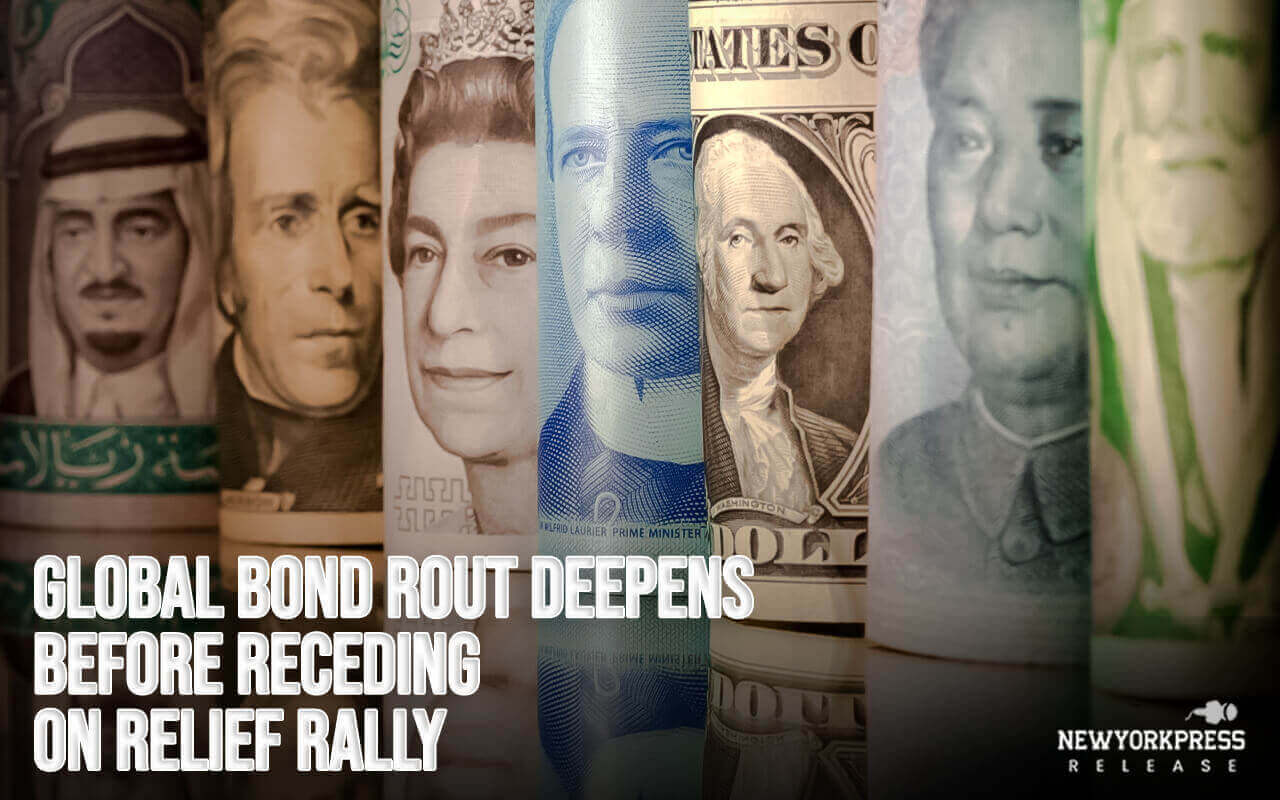The fall in government bond markets intensified early Wednesday, with benchmark US yields reaching new 16-year highs as speculators bet that persistently high interest rates will stall global growth and decrease investor appetite for riskier assets.
The Treasury rout later backed out on a cooler-than-anticipated U.S. private payrolls report that assisted stocks in the Wall Street rebound from a sharp sell on Tuesday that sent the three major US market indexes to four-month lows.
Concerns about growth dragged on crude oil and gold prices, while European equities declined for a third day as store shares tumbled on a drop in consumer spending.
The bond gain, whose price moves inversely to yield, is expected to be short-lived, with Friday’s September jobless report being the market’s next focus, said Kim Rupert, managing director of global fixed income at Action Economics in San Francisco.
“The sell-off has been really dramatic. It’s been rapid. It’s been huge,” Rupert said. “The market was so oversold that it was looking for a catalyst to rally on and found it in ADP.”
Rupert cited the ADP National Employment Report that revealed US private payrolls grew by 89,000 jobs in September, the smallest yield since January 2021.
The gains on Treasury notes hit 4.884%, a fresh 16-year high in early London trade, while 30-year Treasury gains exceeded 5% for the first time since August 2007.
“ADP is the canary in the coal mine that things are slowing,” said Rhys Williams, chief strategist at Sprouting Rock Asset Management in Bryn Mawr, Pennsylvania. “The upcoming job reports are going to be less robust than the previous few months.”
The market did not pay attention to the survey from the Institute of Supply Management (ISM) that revealed the U.S. services sector was slowing in September as fresh orders fell to a nine-month low. But inflation continued to be higher and employment decreased gradually 18 months after the Federal Reserve began increasing rates to cool demand.
According to CME Group’s FedWatch Tool, market expectations for a rate hike in November have dropped to 23.7% from 28.2% on Tuesday. After retreating from pricing on Tuesday that kept the Fed’s overnight rate over 5% through next July, futures showed the Fed’s overnight rate remaining above 5% through next July.
MSCI’s global stock index finished up 0.23%, and the pan-European STOXX 600 index lost 0.14%.
Wall Street stocks increased in value. The Dow Jones Industrial Average increased by 0.39%, the S&P 500 increased by 0.81%, and the Nasdaq Composite increased by 1.35%.
On Tuesday, European bonds followed suit, with rates on Germany’s benchmark 10-year paper jumping above 3% for the first time since 2011 before falling to 2.928%. The country’s 30-year yield increased to a 12-year high before declining.
Despite the Bank of Japan’s (BOJ) offer to buy $4.5 billion in bonds on Wednesday, Japan’s 10-year yield jumped 4.5 basis points to a decade-high.
Government bond yields in Australia, Canada, and the United Kingdom have all risen this week.
Bond market movements drew money into the US dollar, which was stronger than the euro in overnight trade. The dollar index, which measures the value of the US currency against a basket of foreign currencies, fell 0.38%.
Earlier, MSCI’s broadest index of Asia-Pacific equities outside Japan fell to 11-month lows, losing 1.1% for the second consecutive day.
Real-term rates in the United States are likewise near 15-year highs, in part because there hasn’t been much of a shift in market gauges of inflation expectations.
THE MARCH OF THE DOLLAR
The yen was trading near 150 per dollar on Wednesday, following an unexpected but brief spike in the previous session that fueled rumors that Japanese officials had interfered to boost the currency.
On Tuesday, the Japanese yen surpassed the 150-per-dollar mark before surging to 147.3. There has been no official confirmation from Tokyo, where the finance minister and chief currency diplomat have made no formal comments on the decision.
The yen was recently trading at 149.01 per dollar.
The dollar’s advance pushed the euro to a 10-month bottom of $1.0448 overnight and sterling to a seven-month low of $1.20535.
The euro was last worth $1.18, up 0.5% on the day. The pound was up around the same amount at $1.212.
SOcGen strategist Kit Juckes said, “For now, the FX market is a bystander, watching Treasuries and waiting for them to break something.”
Fed officials view growing yields on long-term US Treasury debt as not raising any warnings yet.
Oil prices fell, exceeding 5%, after reports that Russia may lift its diesel ban in the near future and US government data that showed weaker gasoline demand.
US crude futures sank $5.01 to $84.22 per barrel, while Brent fell $5.11 to $85.81.
Gold prices fell for the eighth straight day as investor confidence was pulled down by rising Treasury yields amid predictions that the Fed will keep rates higher for longer.
Gold futures in the United States finished 0.4% lower at $1,834.80 per ounce.




